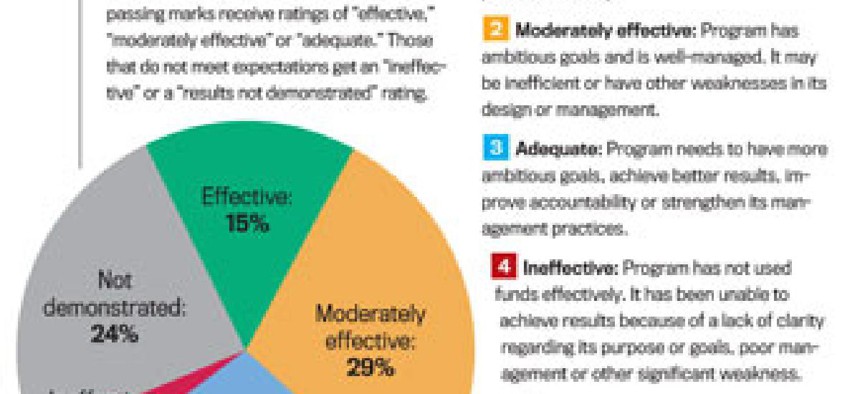PART earns partial credit from critics

Both sides agree that the program rating tool, despite flaws, has few competitors
The Program Assessment Rating Tool (PART), which federal agencies use to determine whether their programs are effective, is in need of improvements, some critics say. But even the critics agree that few alternatives exist.
PART is under fire from critics who argue that it is too blunt and sometimes biased. Others insist that Congress, not the executive branch, should take the lead in evaluating federal programs.
Those sentiments were expressed last week at a hearing of the Senate Homeland Security and Governmental Affairs Committee’s Federal Financial Management, Government Information and International Security Subcommittee.
The tool’s defenders, who include Sen. Tom Coburn (R-Okla.), said PART enables a more comprehensive review of federal programs than any other means available. Coburn, who holds annual hearings on PART, said the executive branch leads the effort to evaluate programs partly because Congress seems uninterested in taking the lead role.
“We’re lazy,” said Coburn, the subcommittee’s chairman. PART, he said, is the only tool available.
Clay Johnson, deputy director for management at the Office of Management and Budget, said the Bush administration continues to improve the tool, which it began using in 2002. Johnson said many lawmakers appear to be uninterested in critically assessing the effectiveness of federal programs.
PART allows Congress to question the value of federal programs and define program performance standards, he said. Congress should hold agencies accountable for meeting those standards, he added.
Using PART, agency officials examine programs to assess whether they have clear purposes and defined goals and whether they are meeting those goals. The assessment asks common questions about each program to discover its strengths and weaknesses. The results show agencies how they can improve.
Bush administration officials weigh the PART scores among several factors in making program funding requests in the president’s annual budget proposal, Johnson said. About 80 percent of federal programs have been assessed using PART, and the remaining 20 percent are scheduled for assessment this year. The results are publicly available at OMB’s ExpectMore.gov Web site.
PART has critics outside and inside government. Adam Hughes, director of federal fiscal policy at OMB Watch, an independent watchdog group, said PART is poor at measuring program effectiveness. Testifying at last week’s hearing, Hughes said the tool is biased and its assessment measures are not as useful as they should be.
“PART assessments are tantamount to a baseball coach walking to the mound to remove his pitcher and then chastising him for not kicking enough field goals as he brings in a reliever,” he said.
Hughes said OMB uses the rating system to increase the Bush administration’s authority and influence, and to diminish the role of Congress, which has statutory responsibility for assessing federal programs.
But Johnson deflected that criticism. “This is not a power grab by the executive branch,” he said. Within the House Appropriations Committee, he added, “one unelected staff member” opposes PART.
Johnson said he is baffled by language about PART contained in the committee report on the Fiscal 2007 Transportation, Treasury, Housing and Urban Development, the Judiciary, the District of Columbia and Independent Agencies Appropriations Act, which the House passed last week. “Most budget justifications continue to be filled with references to [PART], drowning in [redundancy] and yet still devoid of useful information,” the report states.
“It’s inexplicable that language like that is in there,” Johnson said.
The administration and Congress disagree on aspects of PART, said Mike Hettinger, staff director of the House Government Reform Committee’s Government Finance, Management and Accountability Subcommittee. Hettinger has been outspoken about PART problems. The administration’s scoring brings bias into the system, he said, but if Congress were doing the scoring, the same problems would exist.
“At the end of the day, someone’s making a judgment,” Hettinger said. The administration should offer empirical information on the programs and let Congress assess that information, he said, adding, “Because the PART is so blunt, it’s probably hurt its acceptance up here.”
Acceptance takes time, Hettinger said, and PART has not had enough time to build credibility. “I think folks need to realize that,” he said. “It’s a good idea, and we need to find a way to make it work.”
NEXT STORY: SBA seeks to help women earn contracts



